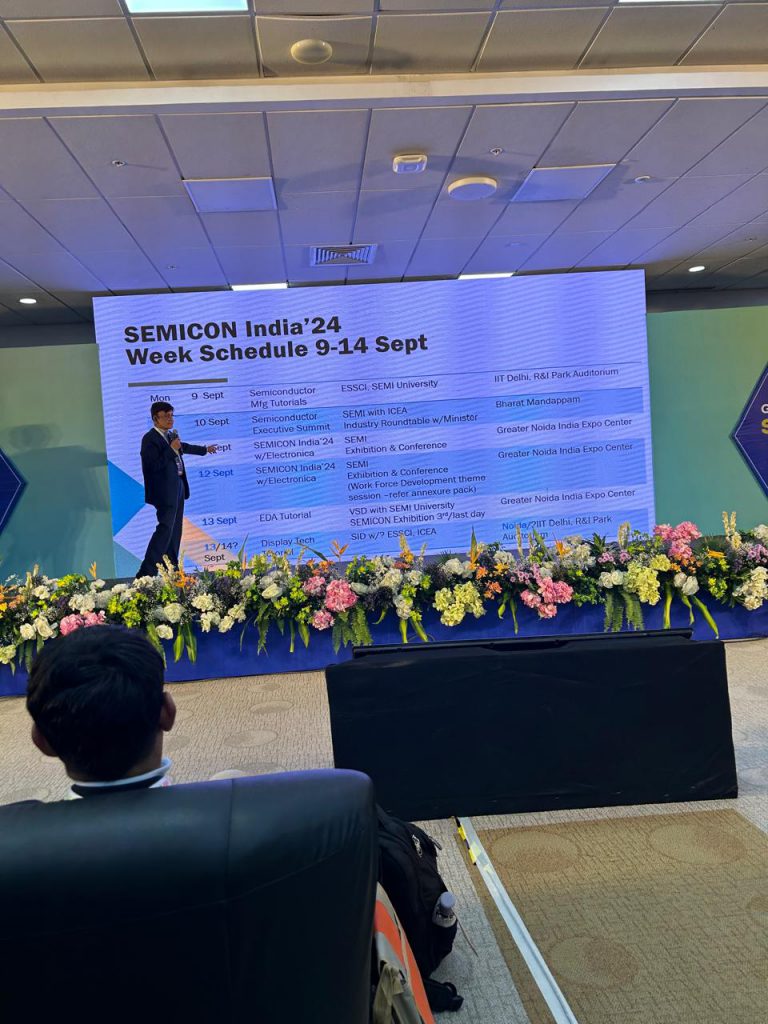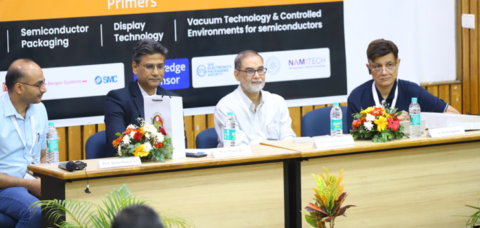
My keynote presentation at Gujarat Semiconnect 24 earlier this week explored the issues in “Developing India’s Semiconductor Manufacturing Workforce” and was based on the following principles:
- Semiconductor Manufacturing skills are different from design skills. India has its design industry, but it needs to build its semiconductor manufacturing skilled workforce.
- Semiconductor manufacturing skills are not just computer based, class-room trainings. There is a need to expose the future workforce to the tools, processes and actual tips, tricks and traps of the trade! There is no substitute to the actual hands-on and workshop exposure.
- Semiconductor manufacturing knowledgebase is multi-disciplinary drawing from different engineering disciplines. The Semiconductor fab shopfloor has electronics engineers – as well as civil, chemical, mechanical, materials, computer engineers…India needs to leverage its foundation degree programs with appropriate skill certifications to create a workforce that can be leveraged across horizontal industries in Indian and global industries.
As we go ahead, India will need technicians who will be able to create an ultra-high vacuum, know how to design and execute vacuum systems to target specifications, diagonize faults, take steps to optimize life and lower costs of operations; they will need to know how to create, handle and etch devices using plasma; they would need to know how to handle pyrophoric gases like silane, diborane and phosphine that catch explosive fire in air!
At Gujarat Semiconnect, I linked these pieces together to bring out the exemplary work being done by Electronics Sector Skill Council in initiating the job-role specific national occupation standards with detailed qualification packs (curriculum) and skill checklists! The eclectic group of professionals in its semiconductor skill committee are drawn from industry and academia – and leverage content from India and abroad. The result is packaged by ESSCI Standards committee in a specific Taxonomy for submission to the government. And finally, after due diligence, a national occupation standard status is granted to the effort.
Specific details are shared here ( on my blog) and case-examples were presented at Gujarat Semiconnect’24.
Foundation Course Checklist el WM 2
Additionally, on behalf of ESSCI, I have contributed the semiconductor manufacturing curriculums (6 sections) in the revised AICTE undergraduate program for semiconductors.
The need now is to scale the faculty/industry awareness of the programs – and enabling a standardized, impactful, industry relevant delivery!
This is planned at IIT Delhi via a combination of semiconductor manufacturing tutorials on 9th September via ESSCI and SEMI in the backdrop of SEMICON India’24.
Gujarat Semiconnect’24 has been a brilliantly curated, well-executed effort by Govt of Gujarat – the action will clearly build up with SEMICON India’24 in September!







